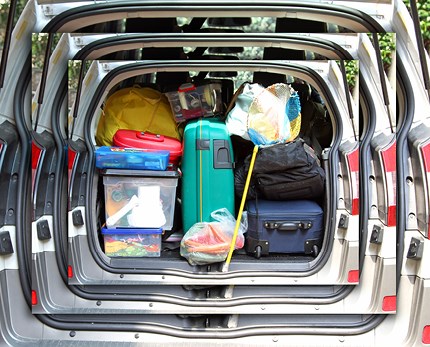Consumers still need a world beyond online

- 23 October 2020
Morag Cuddeford-Jones believes that marketers may have a golden opportunity now lockdown has reignited consumer desire for in-person retail, events and entertainment
Just as we know that the appearance of stollen and mince pies in supermarkets means Christmas is just around the corner, so too Amazon Prime Day heralds the start of deep discounting season. Retailers throw out bargains at silly prices in the hope of attracting an upsell, introducing a new brand or simply offloading old stock before putting the latest upgrade on sale in time for Christmas shopping.
Prime Day (actually two days) was initially an example of ‘the internet on steroids’. It took the distinctive elements of online shopping – availability, fast delivery and cheap stock – and turned the dial up to 11. Like many things Amazon does, it took on individual retailers at their own game, initially referring to Prime Day as ‘Black Friday in July’, although coronavirus means this year it’s going toe-to-toe with the traditional Thanksgiving shopping carnival.
Now, of course, discounting or at least cheap alternatives can be found on ecommerce sites all year round. Shopping on the internet is just the cheaper and more convenient option. And of course, following a series of lockdowns, in 2020 shopping online became the only option. For months and months we have shopped, laughed, communicated and worked almost entirely via computer and mobile.
Is this the final nail in the coffin of bricks and mortar retail and in-person experience? Are we destined to exist wholly through keyboard and screen?
Interestingly, the pandemic has accelerated many companies’ digital plans and stress tested existing ones, in some cases to breaking point. However, it has also highlighted a fundamental facet of human nature: People need people.
When lockdowns first eased, social media was abuzz with people making plans for a good old-fashioned day out in town for a shopping trip. As the cinema became an option, seats were booked and popcorn purchased with all the reverence reserved for a birthday treat. Sports fans look on our New Zealand cousins with ill-concealed envy as they pack out stadiums to watch their favourite teams. Here in the UK, those without pay TV have to go to their local and even then, they have to leave the pub before the end of the second half as curfew kicks in. The prospect of an afternoon on the terraces is highly cherished.
This has perhaps been the opportunity brands wrestling with the dominance of online have been waiting for. It’s the insight they needed to help them understand exactly how to position their proposition. Bricks and mortar retail is proving to be a great case in point. Even before the pandemic, stores that were simply an also-ran to the online version declined rapidly – see the demise of department stores that had been household names for decades. Anything they could do, online could do better.
But stores that can offer something different, a personalised experience, value-add or a sense of theatre, look set to steal the march. For all its algorithms, online simply can’t beat a knowledgeable sales assistant, one who knows which trouser cut will transform your leg length when it hadn’t even occurred to you that it could. It can’t assault you with the scent of cinnamon and orange as you enter a beglittered grotto, stuffed to the gunnels with baubles and tinsel. Nor can it offer you complimentary chocolates, or provide a gorgeous eatery next door for some sweets and treats mid-trip. But retail theatre isn’t just the preserve of big-budget chains. Budget-light boutiques have been delivering the personal touch as deftly as the global brands.
And it’s not just retail where the opportunity for theatre, experience and expectation can thrive. Through Netflix, Amazon and – whisper it - the less-than-kosher streaming services, entertainment has become commoditised. But even before the pandemic, cinema chains were recognising the value of ‘a night out at the flicks’. Showcase installed state of the art screens, super luxe recliners, swankily decorated lounge bars and added Costa franchises to the standard nachos-popcorn-and-pick’n’mix offering.
In Catalyst Issue 4, 2020, out now, we round off the year with a great article from retail guru Swave Szymczyk about what makes a fantastic in-store (and occasionally online) experience. He brings his years at adidas and GAP to explain what really resonates with consumers. There’s no understating what the potential is here. Faced with just the right kind of merchandising, he says: “The part of my brain which makes the decision to spend too much money on streetwear lit up like a Christmas tree in late December.” Achieving this, he shares, is a masterful mix of product selection and consumer insight.
They say you don’t know what you’ll miss ‘til it’s gone. Consumers have been given a salutary lesson in what, how and why they consume. Online may have been convenient, but it wasn’t satisfying. Now people have been turned on once more to the unique attractions of the in-person experience, it’s a golden opportunity and one marketers would be mad not to grab.
Read more about how brands are putting discovery at the heart of their retail offering in the latest edition of CIM’s member-only magazine, Catalyst, out now. Find out how you can become a member from as little as £15 a month.

- 0 views

 FAQs
FAQs
 Log in
Log in
 MyCIM
MyCIM





